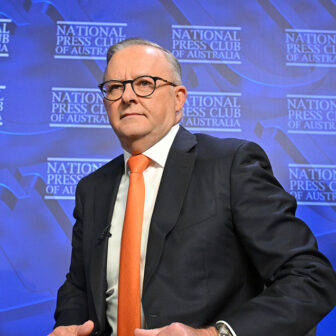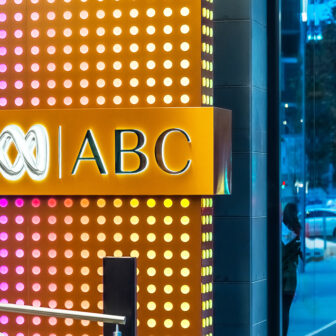The ABC is engaged in the delicate art of navigating intergenerational differences just when tastes and habits are shifting profoundly. At the moment, to be blunt, the balance seems to involve irritating but not alienating older listeners in order to attract emerging listeners.
Can the tricky manoeuvre be executed successfully? Well, the experiment is under way, let’s put it that way. It is too early to tell.
Can older creatives even hope to discern the preferences of younger consumers? Can cultural institutions like the ABC still preside over broad-based platforms that avoid the trying-to-be-all-things-to-all-people trap — platforms that nevertheless offer satisfying and stimulating material to enough subgroups of citizens, in any one week, to justify their continued existence?
Pity the programmer or decision-maker in any creative outlet pitching ideas amid constant social media reactions and furious streaming competition. A publicly funded broadcaster’s challenge is especially tough. It must be distinctively different from commercial offerings, read the emerging culture acutely, and maintain (most) pre-existing standards — all despite constantly challenged budgets.
This is hard, hard work. In the life-cycle rhythms of the past, younger people weren’t attached to institutions like the ABC — or orchestras or newspapers, for that matter. But they tended to shift closer once mortgages and children arrived and households were formed.
But to glance at the current figures for under-forties viewing, say, the ABC’s 7pm TV news is to see vividly the demographic cliff that prompts such consternation within the broadcaster and among other traditional news outlets. More than 80 per cent of broadcast viewers for this service are fifty-five or older.
To my mind, though, the vital question is this: how should the ABC, rather than panic, react wisely to changing patterns of cultural life? Many younger people do still rely on the ABC’s digital news offerings, which collectively rank as the second-most-visited digital news outlets in Australia. But are they actually trying as a group to keep up with the news cycle the way older Australians once did? It’s not too long since the question could reliably be answered “yes,” but not now, or not in the same way.
So how are broadcasters around the world approaching similar shocks? If the recent European Broadcasting Union conference is any guide, then a lot of them are busily absorbed in the same quandary. The Danes distilled it into a few words: younger people are seeking more content, and older listeners spend more time listening.
Attendees created various “audience-needs states” to describe the drivers of media consumption: keeping me in the loop, helping me escape, keeping me company, broadening my horizons and helping me buy “social currency” (presumably to join in water-cooler conversations). As they concluded, you could hit two audience-needs states at once, but not easily three.
The Danes are looking at the gaps: where are needs being met and where not? The phenomenal growth of podcasting has been documented virtually everywhere (the BBC reported a 27 per cent rise in titles so far this year), and it was no surprise that true crime was the most popular genre — interestingly followed by psychology and climate.
Swedish radio is actively engaged in this expansion, setting up trans-functional teams to release new podcasts, and trading on their experience managing complex production and content. The Canadians, via their CBC network, are particularly active in developing audio resources.
Some of the standout podcasts offered fascinating insights. The Moth, which has prioritised people telling their own life stories over its successful ten-year life, emphasises this advice to its would-be participants: “Tell stories about your scars not your wounds.” Then it works with them to achieve just that.
Slow Burn, a Slate production, has achieved a phenomenal one hundred million downloads over its six-year lifespan. It is highly produced, and thus not cheap, and makes much use of archive material to animate recent historical events, including Watergate, the Bill Clinton impeachment, the move to the Iraq war, and the Rodney King/LA riots of 2021.
The News Agents is the star achiever of Britain’s newest kid on the block, Global Media & Entertainment. Backed by big money and using well-known ex-BBC talent including Emily Maitlis, Jon Sopel and Lewis Goodall, it has been downloaded a massive twenty-four million times over the past seven months (compared with BBC News’s eighty-five million over four years). Significantly, the company puts immense emphasis on strategically marketing their material via Twitter, TikTok and YouTube.
In fact, one of the common strands that emerged at the conference was summarised nicely by Radio France people: produce less, distribute more. The need to spread good-quality content across younger people’s platforms was seen as critical.
Other interesting insights about changing cultural tastes came last month from the perceptive RedBridge group in Melbourne. In a nutshell, after talking to young consumers, the research shows they follow each other’s news choices. “In terms of how news is consumed now,” writes the company’s Alex Fein, “news items from major outlets are now divorced from their publication’s context — that is, almost no one is actively going to news sites and reading them as though they are digital analogues of newspapers.” She goes on:
Instead, news items are read by people in an entirely new context: through the validation of their social networks. People in their social networks will link to an article, thus conferring some (limited) legitimacy to the item on its own. And this is key: the item’s legitimacy is fast becoming less the product of the source publication and far more a product of who inside the social network has recommended it. Some, particularly older people, are still watching television news, but they are watching it sceptically.
Young people, Fein argues, are increasingly rejecting both the form and content of old-style news. They find much of it “not relevant to their lives” and see a lot of media as “a small group of people largely talking to themselves.” And they find the news unspeakably “depressing” and actively avoid it for their own mental health. But she does say that new media outfit Crooked Media in the United States — which promises to not “just focus on what’s broken, but what we can do to fix it” — has developed a model that shows a different approach is not only possible but can be done very profitably as well.
I don’t claim to have sampled all these possibilities, but surely this is material for the ABC to work with? What I do know is that the broadcaster’s employees are constantly being told that demographic cliffs pose an existential crisis for us — that the once-assumed ABC brand identification among the broad populace is dropping, that usage patterns are moving increasingly fast.
Naturally, this prompts questions about our purpose as a public broadcaster. Do we understand our audiences? Can we articulate the tone that must be striven for and the tone that must be avoided?
An intriguing public service metric has been developed within the European Broadcasting Union — a kind of public service algorithm — with points notionally assigned to elements of the production to determine its fit. The yardsticks are telling: variety in terms of depth and breadth; importance (or what listeners and viewers need to know); age appropriateness; topicality; quality; local versus global; distinctiveness; and locally relevant languages. It comes back to the irritate–alienate dilemma.
Those two verbs are mine, by the way, based on gut instinct and personal experience of big changes in the past that didn’t turn out as planned. The 1985 revamp that turned the ABC’s 7pm TV news into The National, starting at 6.30pm, aimed to recruit a bigger available audience earlier in the night and fulfil the dream of a much wider audience. What wasn’t anticipated were complaints from diehard ABC consumers arriving home from work too late to access the earlier timeslot and furious about the disruption to their established household habits.
We were fiddling with an institution that was important in people’s lives. They didn’t approve and said so very loudly. I was there, and it is seared into my memory. Whatever the cool analysis, the move backfired, even though it helped shake up ABC newsrooms. The main bulletin, such a shopwindow of ABC information-giving and prestige, moved back to 7pm a year later.
Tastes and habits have fundamentally altered since then, of course, and are changing as we speak. But The National’s fate encapsulates an exquisite dilemma well known to many advertisers and marketing types: how to refresh an established, even venerable, brand and attract newer consumers while not losing your regulars? Never be cavalier about existing customers, as one adman insisted to me.
So engagement is still there. But that sure-footed confidence about gaining, in any one week, a decent slice of broad-church Australian viewing has become more brittle.
In times of extraordinary volatility — around cultural values, technological change, emerging communities of new chums — the challenge surely lies in posing the right questions about what will last beyond taste-frenzies, and what offers depth and delight to a majority of the culture. This is hard creative work — a dose of humility never hurt either — but supremely worthwhile.
The respected community researcher Neer Korn, who has advised previous ABC boards, insists that the overwhelmingly important factor governing Australians’ attitudes towards the broadcaster is trust. We are a known factor, warts and all. He reiterated to me recently, notwithstanding all these changes I’ve outlined, that the importance of maintaining this trust — via our people, our overall approach — can’t be overstated.
Denial is no solution but neither is panic. And never forget Joni Mitchell’s “Big Yellow Taxi” wisdom: you don’t know what you’ve got till it’s gone. •




